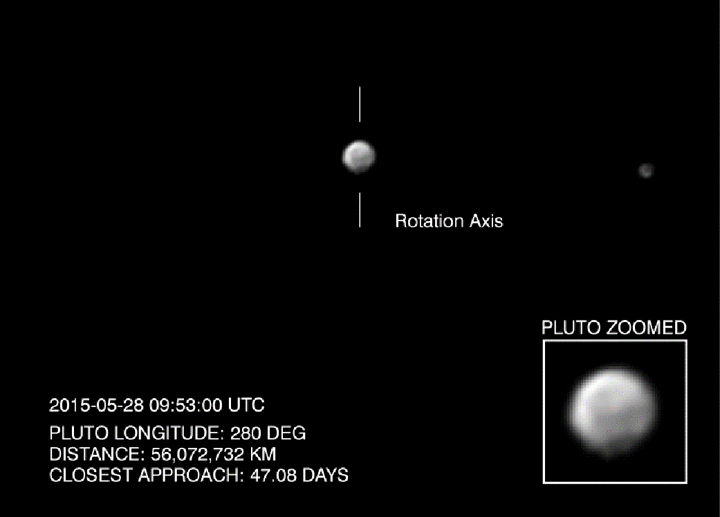TORONTO – We are edging ever-nearer to Pluto.

On Friday, the New Horizons spacecraft, the fastest spacecraft ever launched from Earth, sent back new images of the icy world, the best yet.
The images were taken by a camera on board the spacecraft, which is destined to make its closest flyby of the once-planet Pluto on July 14. The images were taken over several days, from May 28 to June 2.
READ MORE: Why you should get excited about the mission to Pluto
Already the images are illustrating that Pluto is a complex world, with both dark and bright terrain.
“Even though the latest images were made from more than 30 million miles away, they show an increasingly complex surface with clear evidence of discrete equatorial bright and dark regions—some that may also have variations in brightness,” says New Horizons Principal Investigator Alan Stern, of the Southwest Research Institute, Boulder, Colorado.
“We can also see that every face of Pluto is different and that Pluto’s northern hemisphere displays substantial dark terrains, though both Pluto’s darkest and its brightest known terrain units are just south of, or on, its equator. Why this is so is an emerging puzzle.”
Though the images may not seem like much, this was the best image of Pluto before New Horizons:
Pluto is 4.78 billion km from Earth. The spacecraft launched in January 2006, just seven months before Pluto was reclassified as a dwarf planet (rather than our solar system’s ninth planet). New Horizons took these images at a distance of roughly 39 million km from Pluto.
The images have intrigued astronomers and scientists as the dwarf planet comes into view. It’s believed that one particular bright area is a polar ice cap. However, scientists won’t know for sure until the spacecraft gets closer. With just over a month to go with the spacecraft travelling roughly 55,000 km/h, each day will provide better insight on a world that has been rather unknown to us.
In fact, at its closest it will be just 12,500 km from Pluto. It will be like seeing the ponds in New York City’s Central Park from space.
There is no doubt that some of its greatest mysteries are just days away.





Comments